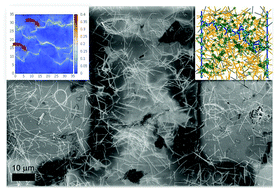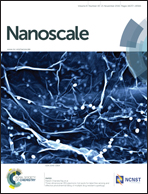Co-percolation to tune conductive behaviour in dynamical metallic nanowire networks†
Abstract
Nanowire networks act as self-healing smart materials, whose sheet resistance can be tuned via an externally applied voltage stimulus. This memristive response occurs due to modification of junction resistances to form a connectivity path across the lowest barrier junctions in the network. While most network studies have been performed on expensive noble metal nanowires like silver, networks of inexpensive nickel nanowires with a nickel oxide coating can also demonstrate resistive switching, a common feature of metal oxides with filamentary conduction. However, networks made from solely nickel nanowires have high operation voltages which prohibit large-scale material applications. Here we show, using both experiment and simulation, that a heterogeneous network of nickel and silver nanowires allows optimization of the activation voltage, as well as tuning of the conduction behavior to be either resistive switching, memristive, or a combination of both. Small percentages of silver nanowires, below the percolation threshold, induce these changes in electrical behaviour, even for low area coverage and hence very transparent films. Silver nanowires act as current concentrators, amplifying conductivity locally as shown in our computational dynamical activation framework for networks of junctions. These results demonstrate that a heterogeneous nanowire network can act as a cost-effective adaptive material with minimal use of noble metal nanowires, without losing memristive behaviour that is essential for smart sensing and neuromorphic applications.



 Please wait while we load your content...
Please wait while we load your content...